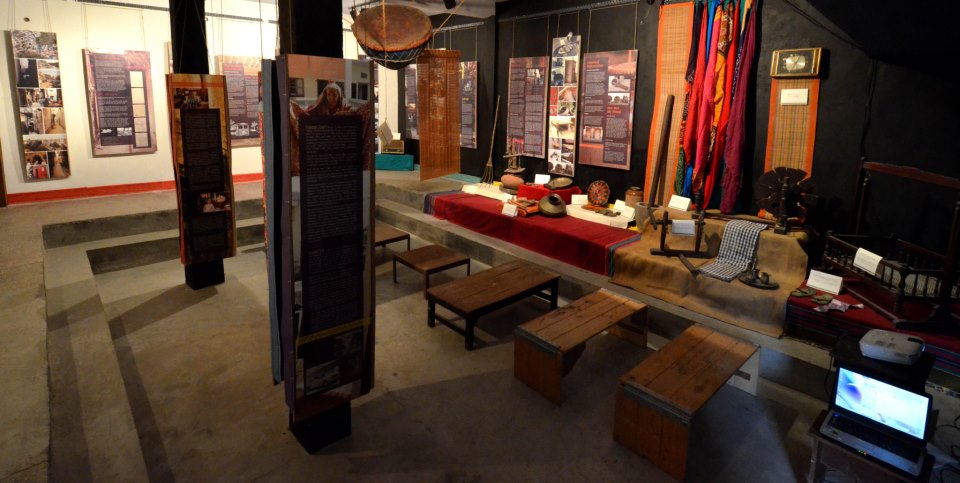Rivers
Refugees of the Kosi embankments – A booklet by Dinesh Kumar Mishra
Posted on 13 Mar, 2013 02:44 PMKosi, one of the most vibrant rivers of North Bihar begins its journey at a height of about 7000 m in the Himalayan range. After entering the plains, the bed of the Kosi widens drastically and it spreads over 6 to 10 km.
Save Ganga and Save Himalayas - Meeting cum panel discussion - Save Ganga Movement, New Delhi, March 12, 2013
Posted on 28 Feb, 2013 10:46 PMOrganizers
Venue
Dealing with arsenic in rural Bihar - Evaluating the successes and failures of mitigation projects
Posted on 21 Feb, 2013 11:51 PMArticle Courtesy: Delft University of Technology
Author(s): Matthijs Brouns, Merijn Janssen, Andrew Wong
Rights of adivasis over forest lands diminishes; their consent no longer mandatory for all development projects taken up on forest land - Roundup of the week’s news (February 11-17, 2013)
Posted on 18 Feb, 2013 11:18 PMAdivasis' rights over forest lands diminishes
Assessing the land use change and its impact on water resources: A study on the Mula and Mutha rivers catchment area in Pune
Posted on 17 Feb, 2013 09:11 PMLand use changes hydrologic system and have potentially large impacts on water resources. An assessment in an area with seasonally limited water availability and which is subject to rapid socio- economic development and population growth will provide an exemplary view on the local impacts of major recent developments in India. In this backdrop this paper analyzes past land use changes between 1989 and 2009 and their impacts on the water balance in the Mula and Mutha Rivers catchment upstream of Pune. The aim of the paper is:
- assess the land use changes between 1989/1990 and 2009/2010
- analyze the impacts of these changes on the long-term water balance components in the Mula and Mutha Rivers catchment upstream of the city of Pune.
An exhibition at Studio Safdar in Shadi Khampur traces the history of the urban village and its water systems
Posted on 10 Feb, 2013 07:12 PMGuest post: Amita Bhaduri
West Delhi’s dusty neighbourhood, Shadi Khampur now has its own museum, in the traditional brick-and-mortar sense. I live nearby, have worked out of an office here and am familiar with the alleyways. But I got to know only now, what life in the neighbourhood was like. Its rich history and its connect to larger narratives from the past, like the series of land acquisitions in Delhi, the Emergency, and the anti-Sikh riots of 1984 which had gone largely undocumented and unarchived have been chronicled in the Neighbourhood Museum of Local History of Shadi Khampur, at Studio Safdar, a cafe cum bookstore.

Neighbourhood Museum at Studio Safdar
Source: Facebook page on “Public Art Project at Studio Safdar”
Assessing the environmental flows for Kumbh Mela- 2013 at Triveni Sangam, Allahabad, Uttar Pradesh- A document by World Wildlife Fund India
Posted on 04 Feb, 2013 03:49 PMThis document by the World Wildlife Fund India, is on the rapid assessment done on the Environmental Flows(E-Flows) for Kumbh Mela that is taking place in Allahabad, Uttar Pradesh.
Let the Western Ghats be 'damned': A presentation on how dam building affects the ecology and social structure of these biodiversity spots
Posted on 29 Jan, 2013 03:19 PMThese global biodiversity hotspots in the country, extraordinarily rich in plant and animal species, are being submerged in the name of development and growth. An overview of the dams built and proposed in this area.
Delhi’s draft water policy released - Roundup of the week’s news (January 21 -27, 2013)
Posted on 28 Jan, 2013 08:14 PMDelhi’s draft water policy
